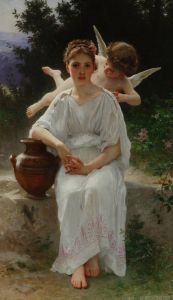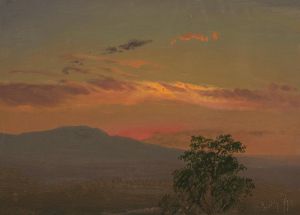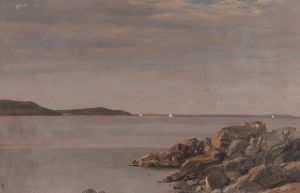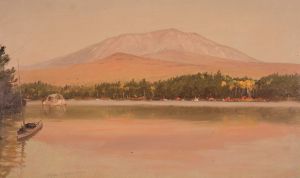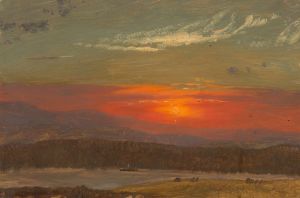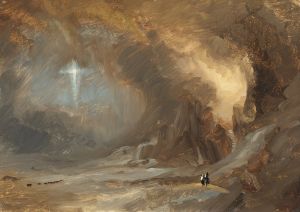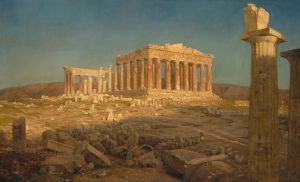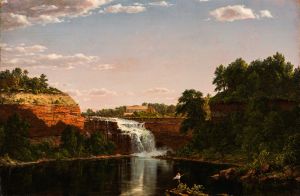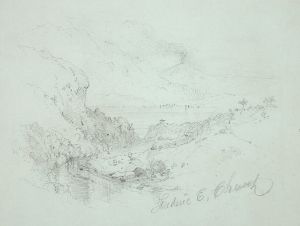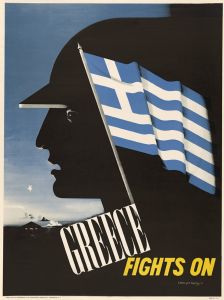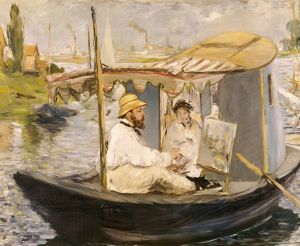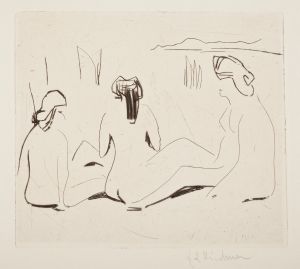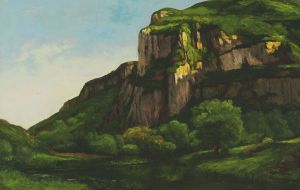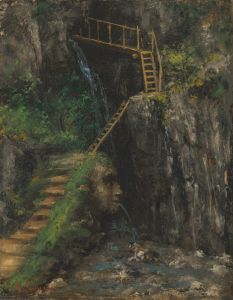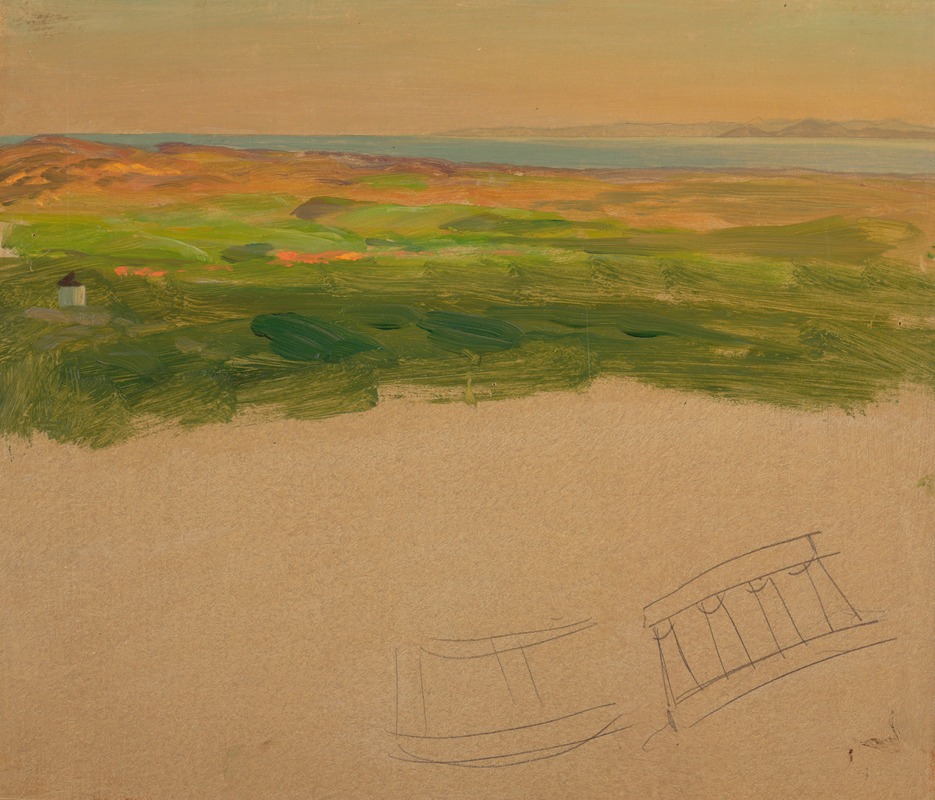
Landscape, near Syria or Greece
A hand-painted replica of Frederic Edwin Church’s masterpiece Landscape, near Syria or Greece, meticulously crafted by professional artists to capture the true essence of the original. Each piece is created with museum-quality canvas and rare mineral pigments, carefully painted by experienced artists with delicate brushstrokes and rich, layered colors to perfectly recreate the texture of the original artwork. Unlike machine-printed reproductions, this hand-painted version brings the painting to life, infused with the artist’s emotions and skill in every stroke. Whether for personal collection or home decoration, it instantly elevates the artistic atmosphere of any space.
"Landscape, near Syria or Greece" is a painting by the renowned American landscape artist Frederic Edwin Church, who was a central figure in the Hudson River School, a mid-19th century American art movement known for its romantic portrayal of the American wilderness. Church is celebrated for his detailed and dramatic landscapes, often inspired by his extensive travels.
Frederic Edwin Church was born on May 4, 1826, in Hartford, Connecticut, and showed an early aptitude for art. He studied under Thomas Cole, a prominent landscape painter, which significantly influenced his style and thematic focus. Church became known for his ability to capture the grandeur and beauty of natural landscapes, often infusing them with a sense of the sublime.
"Landscape, near Syria or Greece" is one of Church's lesser-known works, and as the title suggests, it depicts a scene that is inspired by the regions of Syria or Greece. This painting reflects Church's interest in exotic and distant locales, a theme that was prevalent in his work following his travels outside of the United States. Church was known to travel extensively, and his journeys to South America, Europe, and the Middle East provided rich material for his art.
The painting is characterized by Church's meticulous attention to detail and his ability to convey the atmospheric effects of light and weather. His landscapes often feature dramatic contrasts between light and shadow, and this work is no exception. The composition likely includes elements typical of the regions it represents, such as rugged terrain, ancient ruins, or Mediterranean flora, though specific details about the painting's content are not widely documented.
Church's work was heavily influenced by the scientific and religious thought of his time. He was known to incorporate elements of natural history and geology into his paintings, reflecting a deep interest in the natural world and its divine creation. This intellectual curiosity is evident in the precision and realism of his landscapes.
"Landscape, near Syria or Greece" fits within the broader context of Church's oeuvre, which often sought to capture the majesty and diversity of the world's landscapes. His paintings were not only artistic endeavors but also cultural artifacts that reflected the 19th-century American fascination with exploration and discovery.
While specific details about the provenance or current location of "Landscape, near Syria or Greece" are not readily available, Church's works are held in high esteem and are part of numerous prestigious collections, including those of the Metropolitan Museum of Art in New York and the National Gallery of Art in Washington, D.C.
Frederic Edwin Church passed away on April 7, 1900, but his legacy endures through his contributions to American art and his influence on subsequent generations of landscape painters. His ability to capture the beauty and complexity of the natural world continues to resonate with audiences today.





